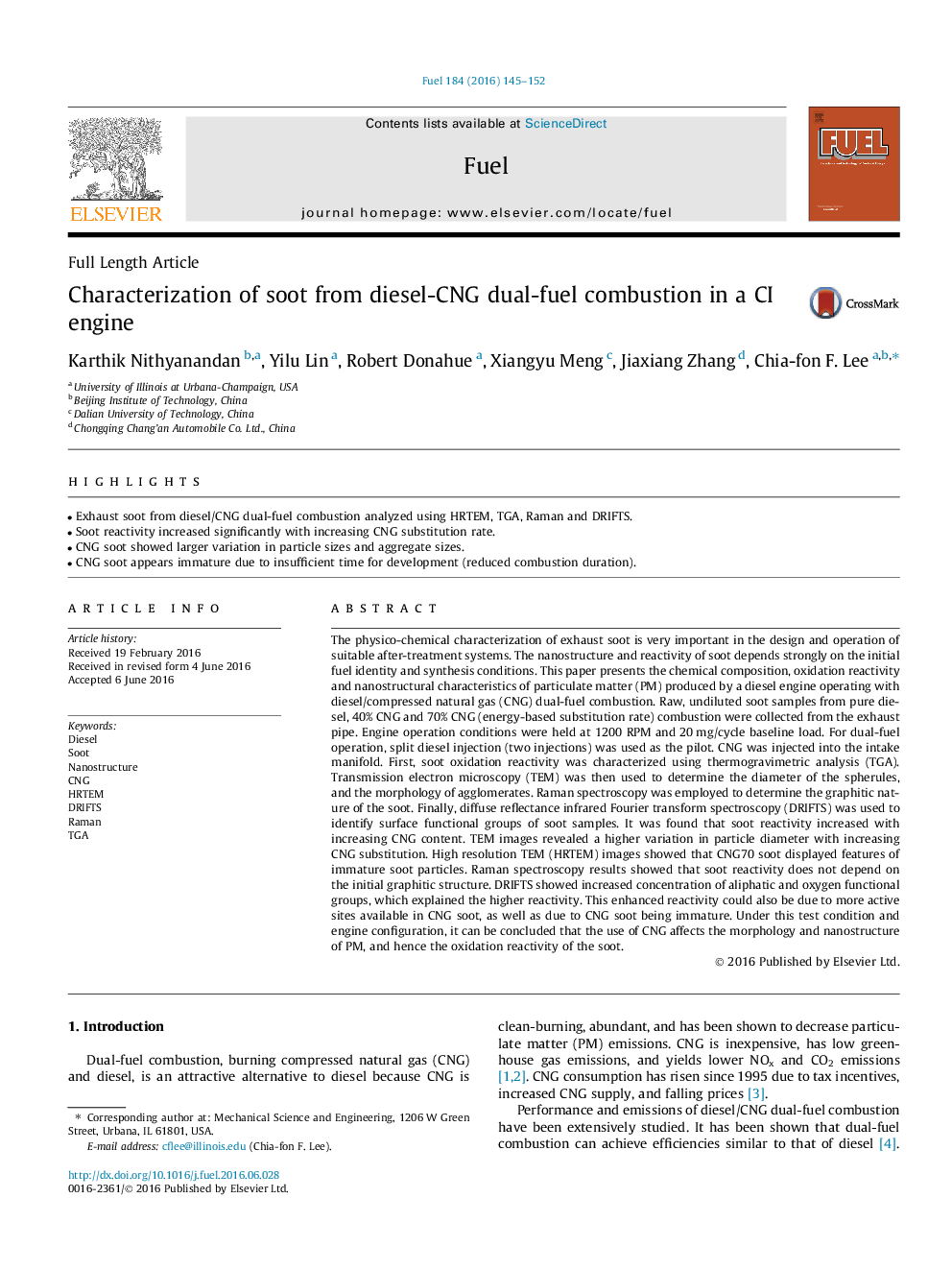| کد مقاله | کد نشریه | سال انتشار | مقاله انگلیسی | نسخه تمام متن |
|---|---|---|---|---|
| 6632961 | 461089 | 2016 | 8 صفحه PDF | دانلود رایگان |
عنوان انگلیسی مقاله ISI
Characterization of soot from diesel-CNG dual-fuel combustion in a CI engine
دانلود مقاله + سفارش ترجمه
دانلود مقاله ISI انگلیسی
رایگان برای ایرانیان
کلمات کلیدی
موضوعات مرتبط
مهندسی و علوم پایه
مهندسی شیمی
مهندسی شیمی (عمومی)
پیش نمایش صفحه اول مقاله

چکیده انگلیسی
The physico-chemical characterization of exhaust soot is very important in the design and operation of suitable after-treatment systems. The nanostructure and reactivity of soot depends strongly on the initial fuel identity and synthesis conditions. This paper presents the chemical composition, oxidation reactivity and nanostructural characteristics of particulate matter (PM) produced by a diesel engine operating with diesel/compressed natural gas (CNG) dual-fuel combustion. Raw, undiluted soot samples from pure diesel, 40% CNG and 70% CNG (energy-based substitution rate) combustion were collected from the exhaust pipe. Engine operation conditions were held at 1200 RPM and 20Â mg/cycle baseline load. For dual-fuel operation, split diesel injection (two injections) was used as the pilot. CNG was injected into the intake manifold. First, soot oxidation reactivity was characterized using thermogravimetric analysis (TGA). Transmission electron microscopy (TEM) was then used to determine the diameter of the spherules, and the morphology of agglomerates. Raman spectroscopy was employed to determine the graphitic nature of the soot. Finally, diffuse reflectance infrared Fourier transform spectroscopy (DRIFTS) was used to identify surface functional groups of soot samples. It was found that soot reactivity increased with increasing CNG content. TEM images revealed a higher variation in particle diameter with increasing CNG substitution. High resolution TEM (HRTEM) images showed that CNG70 soot displayed features of immature soot particles. Raman spectroscopy results showed that soot reactivity does not depend on the initial graphitic structure. DRIFTS showed increased concentration of aliphatic and oxygen functional groups, which explained the higher reactivity. This enhanced reactivity could also be due to more active sites available in CNG soot, as well as due to CNG soot being immature. Under this test condition and engine configuration, it can be concluded that the use of CNG affects the morphology and nanostructure of PM, and hence the oxidation reactivity of the soot.
ناشر
Database: Elsevier - ScienceDirect (ساینس دایرکت)
Journal: Fuel - Volume 184, 15 November 2016, Pages 145-152
Journal: Fuel - Volume 184, 15 November 2016, Pages 145-152
نویسندگان
Karthik Nithyanandan, Yilu Lin, Robert Donahue, Xiangyu Meng, Jiaxiang Zhang, Chia-fon F. Lee,